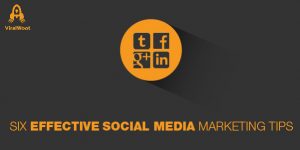Last week, Greg Swan shared an interesting tweet as part of his presentation on the state of social media in 2020. It talked about the “half life” of content. See below.
Fascinating to compare the half-life of content across platforms (time it takes for a piece of content to reach 50% of its total lifetime engagement)
Twitter: 20 mins
Facebook: 5 hrs
Instagram: 20 hrs
LinkedIn: 24 hrs
YouTube: 20 days
Pinterest: 4 mos
Blog post: 2 yrs— Anu (@anutopiaa) January 28, 2020
Greg glossed over this tweet fairly quickly, as he had a lot of ground to cover. But, I thought it was very interesting–and worthy of more conversation considering the implications for social media marketers.
What piques my curiosity the most is the inverse relationship between the platforms where we spend the most time (Facebook, Insta and Twitter) and the half-life values for content.
We’ve all seen the stats that show where social media marketers are spending the most time–typically, Facebook and Insta are at the top of the list (Twitter has fallen off, but many marketers are still investing time there).
Meanwhile, which networks and tools do we see fewer social media marketers using? Pinterest, for sure. In fact, only 28% of marketers claim to be using Pinterest as a social media tool.
And, just over 50% of Fortune 500 companies do have a corporate blog, that number is far cry from the number of Fortune 500s that use Facebook, Insta and Twitter as social media tools (and, most likely, don’t update their blogs as much as those other channels, either).
And, as you can see from the tweet above, those are the two platforms with the highest content half-life values. Create content for Pinterest or a corporate blog, and it tends to stick around for a while. And, in the process, drive value for your brand.
What’s behind this? A couple key factors.
First, easy of creation. Let’s face it–it’s a lot easier to create a few Facebook or Insta posts each week than it is to create a 750-word blog post. Creating longer-form blog content takes time, resources and money. According to research, the average blog post takes more than 3 hours to create! I’m guessing it probably takes a fraction of that to create a Facebook post.
Second, immediacy is playing into this, too. Marketers want to see immediate returns for their content investments. Make a post on Insta, and you’re seeing likes, comments and tags within minutes. Create a new board on your Pinterest page and it’s litereally months (or years) before the final returns roll in. Our bosses are (typically) demanding immediate (or, at the very least, monthly) returns for our content investments. Long-tail assets like blog posts and pins don’t satiate that desire for immediacy.
I would add podcasting to this list, too. If it were on it, I’m guessing it would reside right between Pinterest and blogs. Same issue–tougher to create (much tougher than a blog post, in fact), little to no immediacy, but long-tail value for weeks and months at a time.
This all speaks to the “what have you done for me lately?” marketing culture we’re now living in. It’s tougher to sell a social marketing approach that won’t pay dividends for months vs. one that will see (almost) immediate results.
I’m usually an advocate for a social content strategy that embraces the immediate (Facebook, Insta, Twitter), but also the long-tail (blogs, podcasts, even LinkedIn, in some ways). As usual, it’s all about moderation and hedging your bets. In this case, it’s also about owned channels vs. “rented” channels.
Again, I thought this was good food for thought as you think about your ongoing social content strategy–and it was worth a little deeper conversation.
Digital & Social Articles on Business 2 Community
(42)






